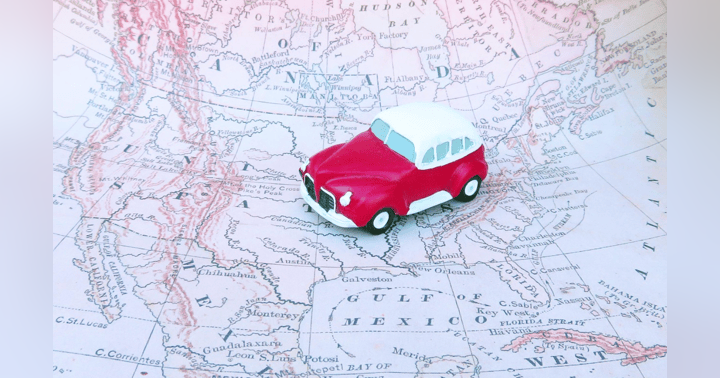How Pace and Rythmn Affects Us When Living Abroad

The Invisible Choreography of Relocation
During my recent short repatriation journey to the US, I've been contemplating how each place we live has its own unique rhythm and pace – one we must find and then harmonize with in order to truly thrive. This isn't merely philosophical musing; it's a tangible reality that affects our wellbeing, productivity, and sense of belonging in profound ways.
When we discuss relocation, conversations typically revolve around logistics: finding housing, navigating transportation, establishing new routines. Yet beneath these practical concerns lies a more subtle challenge – attuning ourselves to the invisible choreography of a new environment. This unseen dance is what truly determines whether we merely exist in a place or genuinely flourish there.
The Science of Environmental Influence
Weather patterns, cultural norms, and environmental factors have the power to influence us in ways we are rarely aware of. Most of this happens on the invisible side of our geographical journey, not the outward version that we spend so much time and energy managing.
Emerging research in environmental psychology suggests that our surroundings affect everything from cognitive function to our emotional regulation. The quality of light in northern versus equatorial regions can alter our circadian rhythms and consequently our energy levels throughout the day. Barometric pressure changes can influence joint pain and mental clarity. Even the background soundscape of a location – whether dominated by natural elements, urban hum, or cultural activities – creates a constant sensory input that our brains process continuously. I can speak to this since living as an expat at altitude in the desert mountains of Mexico and bouncing back for two months per year back at sea-level requires doing this dance every year.
Temperature variations don't just determine our clothing choices; they shape our social habits, our physical activity patterns, and even our communication styles. In regions with extreme seasonal shifts, entire communities adopt different behavioral patterns throughout the year, creating distinct temporal cultures that visitors must navigate. The difference in dress between San Miguel de Allende and Seattle can be quite different.
Sometimes it might just be something as simple as aligning our internal clocks as they struggle to sync with unfamiliar rhythmic patterns. But often, the adjustment runs deeper, requiring a recalibration of expectations, habits, and even values to match the local tempo.
The Three Pillars of Harmonious Transition
I've found that successful transitions require lots of flexibility and adaptation. But there are three systems or moving parts that when applied well and consistently, can make all our international transitions feel slightly magical.
1. A Dedicated Period of Receptive Observation
Before attempting to establish new routines or replicate old ones, there's tremendous value in simply observing. This means temporarily suspending judgment and engaging all your senses to absorb the environment's natural patterns:
- When do locals typically begin and end their workdays?
- How does the community respond to various weather conditions?
- What are the peak times for different activities and spaces?
- How do seasons affect social gatherings and public energy?
- What natural rhythms (tides, wind patterns, animal activities) influence daily life?
During my first three weeks in any new location, I make it a practice to avoid scheduling rigid commitments. Instead, I explore different neighborhoods at various times, observe local habits, and note how my energy naturally fluctuates in this new environment. This creates a mental map of the location's temporal landscape that proves invaluable for later integration.
2. Gradual Synchronization with New Patterns
Once you've observed the underlying rhythms, the next step is conscious alignment. This involves gradually adjusting your personal patterns to harmonize with:
- Weather cycles and how they dictate activity windows
- Traffic patterns and transportation peak times
- Cultural pace – whether meals are rushed affairs or extended social occasions
- Environmental factors like light quality, humidity, and temperature variations
- Social expectations around timing and punctuality
- Work-life boundaries that may differ dramatically from your previous location
One approach that has served me well is to identify a single aspect of local rhythm each week and intentionally align with it. For instance, if I notice that a community has a natural midday lull due to heat or cultural practice, I might restructure my work schedule to embrace rather than resist this pattern, potentially discovering increased productivity in early morning or evening hours that compensates for the adjustment.
3. Designing a Lifestyle that Flows with Natural Currents
The final and most creative phase is designing a sustainable lifestyle that works with rather than against the environment's natural flow. This isn't about surrendering your identity or preferences, but rather finding creative ways to honor personal needs while respecting environmental realities.
This might involve:
- Adapting meal times and dietary choices to match local availability and climate conditions
- Establishing exercise routines that leverage rather than fight environmental factors
- Creating living spaces that respond to local light patterns, temperature variations, and cultural contexts
- Developing social rituals that align with community practices while fulfilling personal connection needs
- Building flexibility into planning to accommodate environmental uncertainties
During a stint living in Southeast Asia, I discovered that fighting the monsoon season's rhythm was futile and frustrating. Instead, by embracing early morning clarity for focused work, using midday downpours for creative thinking and planning, and reserving evenings for social connections, I found a natural flow that not only accommodated the environment but actually enhanced my productivity and wellbeing.
The Art of Personal Attunement
My most successful and meaningful transition experiences emerge when my personal rhythm aligns with my surroundings. Sometimes this can take days or months. But if I pay close attention to my reactions, physical senses and my thinking I can get a pretty good read on whether a place fits me or if I will fit into this new place! It's a balancing act of using my internal barometer that gives me a read-out on a situation.
This sounds very vague, but in fact it calls upon us to hone our intuition and creativity in realms we don't normally function in. It requires developing what anthropologists might call "environmental literacy" – the ability to read and interpret the subtle cues that environments provide about how to best engage with them.
Signs that you're successfully harmonizing with a place's rhythm often include:
- Sleep patterns that stabilize and align with local light cycles
- Diminishing sense of time disorientation or jet lag that extends beyond physical recovery
- Spontaneous adoption of local pacing in walking, speaking, and daily activities
- Decreased frustration with local customs around timing and scheduling
- Physical comfort that increases as your body adapts to local climate conditions
- Growing intuition about weather changes and environmental shifts
- Natural alignment with local meal times and hunger patterns
Conversely, persistent misalignment might manifest as:
- Chronic fatigue that doesn't resolve with adequate sleep
- Ongoing digestive issues despite dietary adjustments
- Persistent irritability with local customs and practices
- Feeling constantly "out of step" with surrounding activity
- Resistance to local patterns that intensifies rather than diminishes over time
These indicators aren't merely psychological – they reflect genuine physiological adaptation or resistance to new environmental conditions.
Beyond Adjustment: Finding Deep Belonging
However, the end result of successful attunement is far more than mere adaptation – it's a path to a much greater sense of belonging. One that goes beyond mere familiarity with physical landscapes.
This deeper belonging emerges when we not only understand but embody the rhythms of a place. It's recognizing the particular quality of light that precedes rain in your specific location. It's instinctively knowing which routes will be congested at certain hours without checking traffic apps. It's anticipating seasonal transitions through subtle environmental cues before they're officially announced.
These seemingly small alignments create a profound sense of integration that transforms our relationship with place. Rather than constantly battling environmental factors, we begin to dance with them, finding opportunities for harmony even in challenging conditions.
A Critical Skill for Modern Mobility
As our world becomes increasingly mobile, perhaps this skill of rhythmic attunement will become one of your most valuable assets for creating meaningful connections wherever you go. The ability to quickly "read" and adapt to new environments may distinguish those who merely accumulate destinations from those who truly experience places in their fullest dimensions.
This capacity for environmental attunement also offers sustainability benefits. When we align with local patterns, we naturally reduce our resource consumption, as we're no longer fighting against environmental realities with technological interventions. Our heating, cooling, lighting, and transportation choices become more efficient as they harmonize with, rather than resist, local conditions.
Moreover, this approach fosters deeper cultural understanding. Many cultural practices that might initially seem arbitrary are actually sophisticated adaptations to local environmental conditions developed over generations. By observing and aligning with these patterns, we gain insight into the ecological wisdom embedded in cultural practices.
Practical Strategies for Developing Environmental Attunement
If you are looking to cultivate this skill, consider these practical approaches:
Keep an environmental journal during your first month in a new place, noting:
- Weather patterns and their effects on your mood and energy
- Times when public spaces are most active/quiet
- Your personal energy patterns throughout the day
- Local meal times and their rationale
- Seasonal activities and preparations you observe
Practice sensory awareness walks where you focus on one sense at a time:
- Sound: The acoustic signature of different neighborhoods at various times
- Light: How natural light moves through spaces throughout the day
- Air: Temperature, humidity, and scent patterns unique to the location
- Movement: The pace and flow of pedestrians, traffic, and natural elements
Experiment with daily routines before cementing habits:
- Try working, exercising, and socializing at different times to identify optimal windows
- Sample various transportation options at different times
- Test multiple grocery shopping times to find your favorite balance of availability and crowd levels
Engage with long-term locals about environmental patterns:
- Ask about seasonal changes and how they prepare for them
- Discuss local weather wisdom and predictive signs
- Learn about traditional timing for various activities and their environmental rationale
An Invitation to Conscious Adaptation
Have you ever experienced this need to "recalibrate" when changing environments? I'd love to hear your insights on exactly what skills you are using to adapt to new places!
Perhaps you've developed unique strategies for reading local rhythms, or maybe you've noticed patterns in your own adaptation process across different relocations. Or possibly you've found certain environments particularly challenging to harmonize with despite your best efforts.
By sharing these experiences, we create a collective wisdom about this largely unexamined aspect of human mobility – the subtle art of finding harmony with the hidden rhythms that define each place we choose to call home, even if only temporarily.
In an era where physical location seems increasingly optional for many kinds of work and lifestyles, perhaps our ability to truly inhabit and harmonize with a place becomes not less but more essential to our well-being and collective sustainability.




